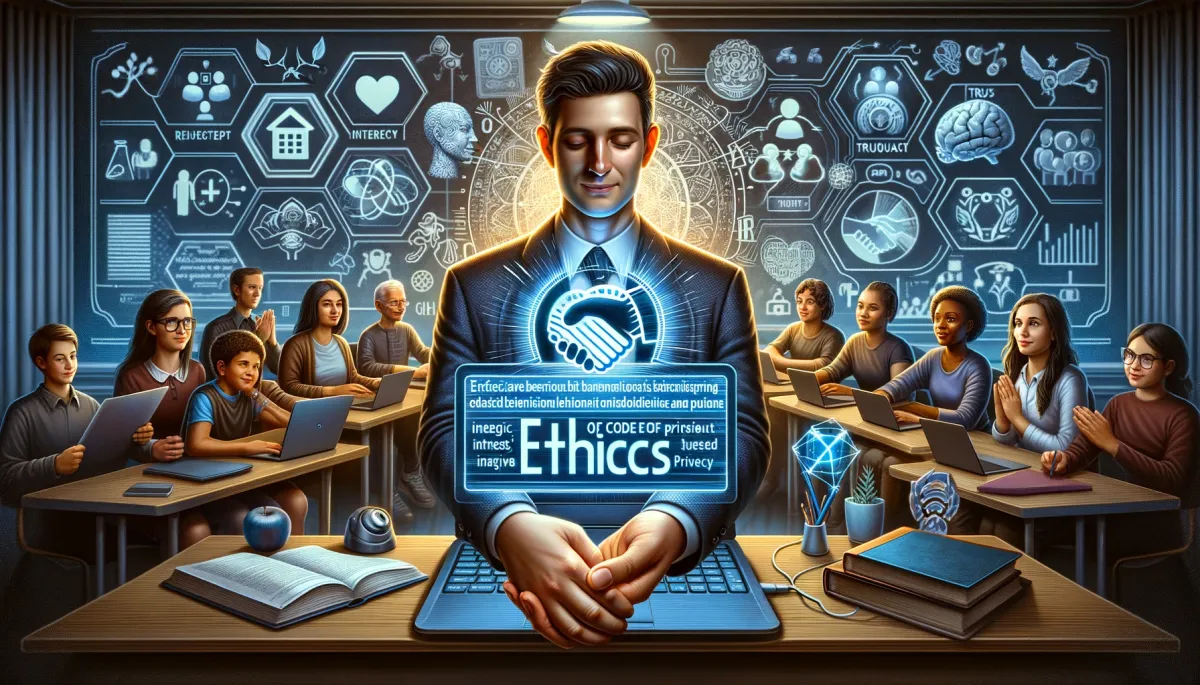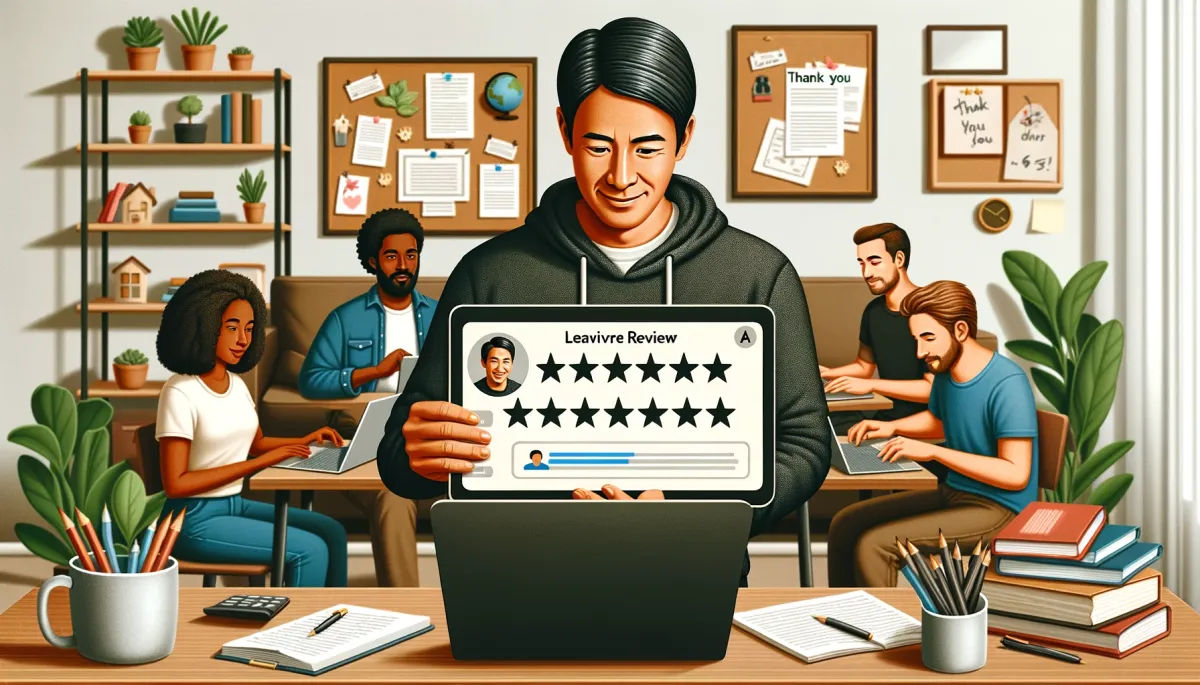Online Tutoring: Frequently Asked Questions

Fanie Naude
CEO & Founder of Knowledgeable Tutor, Buznet Direct, YMC & Naude Consulting

Fanie Naude
CEO & Founder of Knowledgeable Tutor, Buznet Direct, YMC & Naude Consulting

1. Introduction
Welcome to the ultimate guide on "Online Tutoring: Frequently Asked Questions." As the digital age continues to evolve, the realm of education is not far behind. Online tutoring has emerged as a robust alternative to traditional, in-person tutoring, offering unprecedented convenience and flexibility. However, with this new frontier comes a plethora of questions that both tutors and students have.
"Education is not the filling of a pail, but the lighting of a fire." This quote by W.B. Yeats encapsulates the transformative power of education, and online tutoring is one of the latest torchbearers of this transformation. This comprehensive guide aims to shed light on the most frequently asked questions about online tutoring, offering actionable insights and data-backed solutions. Whether you are a tutor eager to expand your reach beyond local boundaries or a student looking for effective learning solutions, this guide is your one-stop resource.
Importance of Understanding FAQs
Understanding the FAQs about online tutoring is not just beneficial but essential for both tutors and students. For tutors, it provides a roadmap to navigate the complexities of digital education, from choosing the right platform to understanding payment mechanisms. For students and parents, it offers a lens to scrutinize the efficacy and reliability of online tutoring services.

2. The Basics of Online Tutoring
What is Online Tutoring?
Online tutoring is the practice of teaching in an online, virtual, or networked environment where teachers and learners are separated by time and space. Unlike traditional tutoring, where physical presence is required, online tutoring allows for remote education, breaking down geographical barriers.
The concept is not new but has gained significant traction in recent years, especially due to the COVID-19 pandemic. According to a report by Grand View Research, the global online tutoring market size was valued at USD 4.81 billion in 2019 and is expected to grow at a compound annual growth rate (CAGR) of 16.1% from 2020 to 2027.
How Does It Differ from Traditional Tutoring?
Online tutoring offers several advantages over traditional tutoring, but it also comes with its own set of challenges. Let's delve into a comparative analysis:
| Aspect | Online Tutoring | Traditional Tutoring |
|---|---|---|
| Location | Remote; can be accessed from anywhere. | Requires physical presence; usually local. |
| Flexibility | High; sessions can be scheduled at any time. | Limited; depends on the availability of both parties. |
| Cost | Generally lower due to the absence of travel and material costs. | May include additional costs like travel and materials. |
| Technology | Requires a stable internet connection and appropriate software. | No such requirements. |
| Personal Interaction | Limited; depends on the quality of the virtual platform. | High; face-to-face interaction. |
| Resource Availability | Access to a wide range of online resources during sessions. | Limited to what is physically available during the session. |
For a more in-depth comparison, you may refer to our article on Online Tutoring vs. In-Person Tutoring: Pros and Cons.
In summary, online tutoring offers unparalleled flexibility and accessibility but requires a certain level of technological proficiency. On the other hand, traditional tutoring offers the advantage of personal interaction but is geographically limiting. Choosing between the two depends on individual needs and circumstances.
As Albert Einstein once said, "Education is not the learning of facts, but the training of the mind to think." Whether online or in-person, the essence of tutoring lies in its ability to foster critical thinking and facilitate learning. Therefore, understanding the basics of online tutoring is the first step in making an informed decision in this educational journey.

3. Equipment and Software Requirements
What Equipment is Needed?
In the realm of online tutoring, the right equipment is not just an add-on; it's a necessity. The basic equipment required for online tutoring includes a computer or laptop with a good processor, a high-definition webcam, a noise-cancelling microphone, and a stable internet connection. These are the pillars on which the virtual classroom stands.
- Computer/Laptop: A device with at least 4GB RAM and a decent processor ensures smooth operation.
- Webcam: A high-definition webcam is essential for clear video quality.
- Microphone: A noise-cancelling microphone aids in better audio clarity.
- Internet Connection: A stable and fast internet connection minimizes disruptions.
As the adage goes, "A workman is only as good as his tools." The same applies to online tutoring; the quality of your equipment can significantly impact the tutoring experience.
Recommended Software and Platforms
When it comes to software and platforms, the choices are abundant. However, not all platforms are created equal. Some of the most recommended platforms include Zoom, Skype, and specialized tutoring platforms like TutorRoom or WizIQ. These platforms offer various features like whiteboards, file sharing, and breakout rooms that can enhance the tutoring experience.
- Zoom: Known for its reliability and multiple features.
- Skype: Offers good video quality and is widely used.
- TutorRoom: Designed specifically for online tutoring.
- WizIQ: Offers a virtual classroom setting with multiple tools.
For a more comprehensive understanding of different platforms, you can refer to our article on Understanding Different Online Tutoring Platforms.

4. Finding the Right Tutor/Student
How to Find Students or Tutors Online?
The quest for finding the right match in online tutoring is akin to finding a needle in a haystack. However, various strategies can simplify this process. Online platforms, social media, and educational forums are excellent places to start. Websites like Tutor.com and Chegg Tutors act as a marketplace for tutors and students.
- Online Platforms: Websites like Tutor.com, Chegg Tutors, and even LinkedIn can be useful.
- Social Media: Platforms like Facebook and Twitter often have groups dedicated to tutoring.
- Educational Forums: Websites like Reddit and Quora can also be useful for finding students or tutors.
For more strategies on how to find students for online tutoring, you can refer to our article on How to Find Students for Online Tutoring.
Importance of Matching Teaching Styles and Learning Needs
Finding a tutor or student is not just about availability or expertise in a subject; it's also about compatibility. A tutor's teaching style should align with a student's learning needs for the relationship to be fruitful. For instance, a tutor who specializes in interactive learning will be better suited for a student who is a kinesthetic learner.
- Interactive Learning: Best for kinesthetic learners who learn by doing.
- Visual Aids: Useful for visual learners.
- Lecture Style: May suit auditory learners who learn by listening.
As Benjamin Franklin wisely said, "Tell me and I forget, teach me and I may remember, involve me and I learn." The essence of this quote lies in the compatibility of teaching styles and learning needs, a crucial factor in the success of any educational endeavor.
By understanding the equipment and software requirements and knowing where and how to find the right tutor or student, you're well on your way to a fulfilling online tutoring experience.

5. Cost and Payment
How Much Does Online Tutoring Generally Cost?
The cost of online tutoring can vary widely depending on several factors, such as the subject being tutored, the tutor's experience, and the platform used. On average, rates can range from $15 to $75 per hour. Some specialized subjects or advanced-level tutoring can even go beyond $100 per hour.
- Subject Matter: STEM subjects often command higher rates.
- Tutor Experience: More experienced tutors generally charge more.
- Platform Fees: Some platforms take a percentage of the tutor's fees.
According to a Statista report, the global online tutoring market is expected to reach $132.21 billion by 2023, indicating a growing willingness to invest in this form of education.
Payment and Invoicing Methods
When it comes to payment, multiple options are generally available, ranging from direct bank transfers to digital payment platforms like PayPal. Invoicing is usually done electronically, and many platforms offer automated invoicing features.
- Bank Transfers: Direct and usually free but can take time.
- PayPal: Quick and convenient but may involve fees.
- Automated Invoicing: Many platforms offer this feature for ease of billing.
For a detailed guide on handling payments and invoicing, you can refer to our article on How to Handle Payment and Invoicing for Your Tutoring Services.

6. Session Logistics
How Are Sessions Scheduled?
Scheduling in online tutoring offers a level of flexibility that is often not possible in traditional settings. Sessions can be scheduled through the tutoring platform itself or via third-party scheduling tools like Calendly. Some tutors and students prefer to coordinate directly through email or messaging apps.
- Platform Scheduling: Most convenient but limited to platform availability.
- Third-Party Tools: Offers more flexibility.
- Direct Coordination: Most flexible but requires more effort.
What Happens if Either Party is Late or Misses a Session?
Life is unpredictable, and sometimes either the tutor or the student may be late or miss a session. Most tutoring platforms and independent tutors have policies in place for such scenarios. These can range from offering a grace period for lateness to rescheduling options or even cancellation fees for no-shows.
- Grace Period: Usually 5-15 minutes.
- Rescheduling: Often allowed if notified in advance.
- Cancellation Fees: May apply for last-minute cancellations or no-shows.
As the saying goes, "Time is money." This is especially true in the world of online tutoring, where both parties invest not just money but also their valuable time. Therefore, understanding the logistics of session scheduling and the protocols for lateness or absence is crucial for a smooth tutoring experience.
By grasping the intricacies of cost, payment, and session logistics, you arm yourself with the knowledge to navigate the financial and logistical aspects of online tutoring effectively. This understanding is not just beneficial but essential for a seamless educational journey in the digital realm.

7. Tutor Qualifications
What Qualifications Are Generally Required?
The qualifications required for online tutoring can vary depending on the subject matter and the platform you're using. However, a bachelor's degree in the relevant field is often considered a minimum requirement. Some platforms may also require certification or even a master's degree for specialized subjects.
- Bachelor's Degree: Often the minimum educational requirement.
- Certifications: May be required for subjects like teaching English as a second language.
- Master's Degree: Sometimes needed for specialized or advanced subjects.
As Albert Einstein once said, "Education is not the learning of facts, but the training of the mind to think." Qualifications are not just about degrees but also about the capability to impart knowledge effectively. For a detailed guide on qualifications, you can refer to our article on Qualifications for Becoming an Online Tutor.
Importance of Continuous Learning and Skill Improvement
In the ever-evolving landscape of education, continuous learning is not a luxury but a necessity. Tutors should engage in regular professional development, attend workshops, and even take courses to stay updated.
- Professional Development: Workshops and seminars can be valuable.
- Online Courses: Platforms like Coursera and Udemy offer subject-specific courses.
- Peer Learning: Engaging with other tutors can provide new insights.

8. Subject Matter
What Subjects Are Most Commonly Tutored Online?
Online tutoring is a vast field, but some subjects are more commonly tutored than others. Mathematics, science, and language arts are often in high demand. However, with the advent of specialized platforms, even niche subjects like coding and music theory are gaining traction.
- Mathematics: Always in high demand.
- Science: Subjects like physics and chemistry are commonly tutored.
- Language Arts: English, especially, is a popular subject.
For a more in-depth exploration of different subjects that can be tutored online, you can refer to our article on Teaching Different Subjects: Tips and Techniques.
Special Considerations for Different Subjects
Different subjects require different approaches. For instance, a subject like mathematics may require a tutor to use a digital whiteboard for solving equations, while language arts could benefit from interactive reading exercises.
- Mathematics: Digital whiteboards can be beneficial.
- Science: Interactive simulations can make complex topics easier to understand.
- Language Arts: Reading and writing exercises can be conducted interactively.
In the words of William Arthur Ward, "The mediocre teacher tells. The good teacher explains. The superior teacher demonstrates. The great teacher inspires." The subject matter and the approach to teaching it can significantly impact the quality of education imparted.
By understanding the qualifications required and the nuances of different subjects, you're not just scratching the surface but diving deep into the world of online tutoring. This depth of understanding is crucial for both tutors and students to make the most out of this educational platform.

9. Student Engagement
How to Keep Students Engaged During Sessions?
Keeping students engaged is one of the most challenging yet crucial aspects of online tutoring. The use of interactive tools, real-world examples, and a variety of teaching methods can significantly enhance engagement.
- Interactive Tools: Use of digital whiteboards, quizzes, and interactive exercises.
- Real-World Examples: Relating subject matter to real-world applications can make learning more relatable.
- Teaching Methods: A mix of auditory, visual, and kinesthetic methods can cater to different learning styles.
As the renowned educator Maria Montessori said, "Education is a natural process carried out by the child and is not acquired by listening to words but by experiences in the environment." For more strategies on maintaining student engagement, you can refer to our article on Maintaining Student Engagement in Online Tutoring.
Use of Interactive Tools and Resources
The digital age offers a plethora of tools designed to make online learning as interactive as possible. From digital whiteboards to gamified quizzes, these tools can make a significant difference in how engaged a student feels during a session.
- Digital Whiteboards: For visual and interactive learning.
- Gamified Quizzes: Makes learning fun and competitive.
- Resource Libraries: Access to e-books, papers, and other educational materials.

10. Ethical Practices
What Are the Ethical Considerations in Online Tutoring?
Ethical considerations in online tutoring are paramount. Issues such as academic integrity, privacy, and confidentiality must be addressed diligently.
- Academic Integrity: Tutors should not complete assignments for students.
- Privacy: Both tutors and students should respect each other's privacy.
- Confidentiality: Personal and academic information should be kept confidential.
As the saying goes, "With great power comes great responsibility." The power to educate comes with the ethical responsibility to do so in a manner that upholds the highest standards. For a comprehensive guide on ethical practices, you can refer to our article on Ethical Practices in Online Tutoring.
Importance of Maintaining Academic Integrity
Maintaining academic integrity is not just an ethical obligation but also crucial for the student's educational development. Tutors should focus on teaching concepts and problem-solving skills rather than providing direct answers to assignments or exams.
- Conceptual Understanding: Focus on teaching the 'why' and 'how' rather than just the 'what.'
- Problem-Solving Skills: Equip students with the skills to tackle similar problems independently.
- Avoid Direct Answers: Providing direct answers to assignments or exams compromises integrity.
By focusing on student engagement and adhering to ethical practices, online tutors can create a learning environment that is not only effective but also morally sound. These elements are not just add-ons but essential components of quality online tutoring.

11. Special Needs and Accommodations
How to Accommodate Students with Special Needs?
Accommodating students with special needs in an online tutoring environment is not just a legal requirement but also a moral obligation. The focus should be on creating an inclusive learning environment that caters to the unique learning styles and needs of each student.
- Individualized Learning Plans: Tailor your teaching methods to suit the specific needs of the student.
- Accessible Materials: Ensure that all learning materials are accessible, including screen readers for visually impaired students.
- Regular Feedback: Keep an open line of communication with both the student and their caregivers to continually adapt your teaching methods.
As Helen Keller once said, "The only thing worse than being blind is having sight but no vision." For more insights, you can refer to our comprehensive guide on Online Tutoring for Special Needs Students.
Legal Obligations and Best Practices
Legal obligations for accommodating students with special needs vary from jurisdiction to jurisdiction but generally include ensuring accessibility and non-discrimination.
- Accessibility: Comply with ADA or similar local laws to make your services accessible.
- Confidentiality: Maintain the confidentiality of any medical or educational records shared with you.
- Inclusive Practices: Use inclusive language and teaching methods to make all students feel welcome.

12. Dealing with Technical Issues
Common Technical Issues and How to Resolve Them
Technical issues are almost inevitable in an online tutoring setting. However, being prepared can make the difference between a minor hiccup and a lost session.
- Connectivity Issues: Always have a stable internet connection. Use Ethernet over Wi-Fi when possible.
- Software Glitches: Keep your software updated and have a basic understanding of troubleshooting.
- Hardware Failures: Have backup hardware like an extra microphone or camera.
"By failing to prepare, you are preparing to fail," Benjamin Franklin wisely noted. For a more detailed guide, you can refer to our article on How to Handle Technical Difficulties During Sessions.
Importance of Having a Backup Plan
Having a backup plan is not just a good idea; it's essential for maintaining professionalism and ensuring that learning is not disrupted.
- Alternative Communication Channels: Have a secondary way to communicate, like a phone line.
- Backup Materials: Keep offline copies of essential teaching materials.
- Rescheduling Policy: Have a clear policy for rescheduling sessions in case of technical failures.
By addressing the needs of special students and being prepared for technical issues, you not only enhance your service quality but also build trust and reliability, which are key to a successful online tutoring career.

13. Feedback and Reviews
How to Give and Receive Feedback?
Feedback is the cornerstone of improvement for both tutors and students. It's a two-way street that, when navigated correctly, can lead to enriching experiences for both parties.
- Constructive Criticism: Always frame your feedback in a constructive manner, focusing on specific actions rather than personal traits.
- Timely Feedback: Provide feedback as close to the event as possible to make it more actionable.
- Openness: Be open to receiving feedback as well, and act on it to improve your tutoring skills.
As Bill Gates once said, "We all need people who will give us feedback. That's how we improve." For more on this, you can read our guide on How to Give Effective Feedback to Online Students.
Importance of Reviews and Testimonials
Reviews and testimonials serve as social proof and can significantly impact your online tutoring business.
- Credibility: Positive reviews build your credibility and attract more students.
- Transparency: Honest reviews give potential students a real-world glimpse into what to expect.
- Continuous Improvement: Negative reviews, if constructive, can be a goldmine for improvement.

14. Advanced Strategies
Scaling Your Online Tutoring Business
Once you've established a solid foundation, the next step is to scale your online tutoring business.
- Diversification: Offer tutoring in multiple subjects or for different age groups.
- Technology Utilization: Use advanced tools for analytics, CRM, and automated marketing.
- Partnerships: Collaborate with educational institutions or other tutors to expand your reach.
"Success usually comes to those who are too busy to be looking for it," Henry David Thoreau wisely observed. For more, refer to our article on Growing Your Online Tutoring Business: Advanced Strategies.
Use of Social Media and Other Marketing Channels
Social media is not just for socializing; it's a potent tool for marketing your online tutoring business.
- Brand Building: Use platforms like Instagram and LinkedIn to build your personal brand.
- Engagement: Use interactive content like quizzes or live Q&A sessions to engage with your audience.
- Advertising: Paid ads can be a quick way to gain visibility among your target audience.

15. Future Trends
Upcoming Trends in Online Tutoring
The world of online tutoring is ever-evolving, and staying updated with the latest trends is crucial for long-term success.
- AI and Machine Learning: These technologies are making personalized learning more accessible.
- Virtual Reality: VR can make online learning more interactive and engaging.
- Globalization: As internet access expands, so does your potential student base.
As Peter Drucker said, "The best way to predict the future is to create it." To stay ahead, you can read our article on Future of Online Tutoring: Trends to Watch.
Importance of Staying Updated with Industry Changes
Staying updated is not just about adopting the latest technologies but also about understanding shifts in educational policies, student behavior, and global events affecting education.
- Continuous Learning: Make it a habit to read industry reports, attend webinars, and participate in relevant online communities.
- Adaptability: Be prepared to pivot your strategies based on new information or trends.
- Networking: Stay connected with other tutors and educational professionals to exchange insights and best practices.
By keeping an eye on future trends and continuously adapting your strategies, you can ensure that your online tutoring business is not just surviving but thriving.

